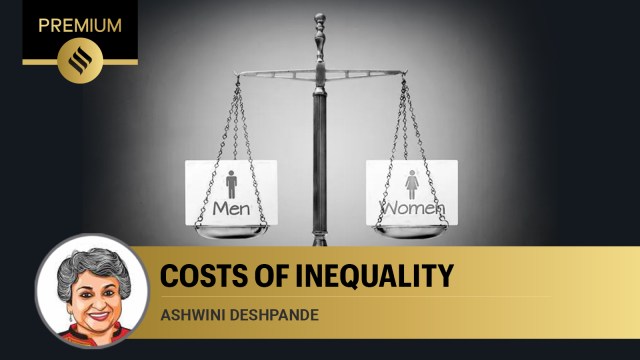
The 2024 edition of the Global Gender Gap Index places India at 129 out of the 146 countries it surveyed. This puts India at the 18th position from the bottom. For comparison, of the 156 countries included in 2021, India was at the 17th position from the bottom. Thus, overall, India’s ranking has remained in the bottom 20 over years.
Like all indices, the Global Gender Gap index, first introduced in 2006, is a précis measure. It is a combination of four different sub-indices — economic participation and opportunity, educational attainment, health and survival and political empowerment — each summarising multiple indicators. The index lies between 0 and 1, with 1 denoting complete parity. It is important to note that this index focuses on gender gaps, that is, the focus is on the position of women relative to men (gender equality), rather than to their absolute position. The idea is to track changes in gender gaps both over time and across countries.
Like all indices, it does not include everything that matters for gender equality, but focuses only on a few key measures. It should not be seen as a comprehensive treatise on gender equality, but as a useful pointer or a highlighter of key summary statistics that can be reliably measured and tracked. The value of the overall index as well as subindices shows how much of the gap has been closed.
At the Centre for Economic Data and Analysis (CEDA), we have developed an interactive tracker which allows readers to see the change in India’s position over time since 2006, and relative to other countries separately for each of the sub-indices, as well as for the overall index (https://tinyurl. com/476nnb55). The lowest value of the index is 0 (far left) and the highest value is 1 (far right).
The 2024 report shows that on “Health and Survival Score”, India’s value is at 0.951 which means that 95.1 per cent of the male-female gap has been closed. Similarly, in educational attainment, 96.4 per cent of the gap has been closed. India has done well on these indicators but since several other countries have done better, India is at 112th position in the educational ranking and at 142nd position in the health rankings among 146 countries.
The Economic Participation subindex is based on gender gaps in labour force participation, share in managerial positions, wage gaps, and wage parity (equal pay for equal work). On this, India’s score at 39.8 per cent places it at the 142nd position among 146 countries. While this is an improvement since 2021 (when it was 32.6 per cent), it is very low in absolute terms, and is lower than the 2012 score of 46 per cent.
To put this score in perspective, countries with the lowest levels of economic parity are Bangladesh (31.1 per cent), Sudan, (33.7 per cent), Iran (34.3 per cent), Pakistan (36 per cent), India (39.8 per cent), and Morocco (40.6 per cent). These economies all register less than 30 per cent gender parity in estimated earned income and less than 50 per cent gender parity in labour force participation.
The report shows that India and its immediate neighbours — South Asia as a region ranks 7th out of the eight regions in the world, above Middle East and North Africa (MENA). Within the seven countries that comprise South Asia, India’s rank is at five, with Bangladesh leading the region at the 99th position globally. Thus, India belongs to a region that ranks low on gender parity and does poorly compared to several of its immediate neighbours.
While there has been an improvement in several dimensions for Indian women, this report points to the persistence of gender gaps in selected indicators. It also reminds us that just a decade back, India’s gender gaps were lower. Should we sit up and take notice or shoot the messenger?
There is ample research documenting the staggering economic costs of side lining women. An OECD estimate reveals that gender-based discrimination in social institutions could cost up to $12 trillion for the global economy, and that a reduction in gender discrimination can increase the rate of growth of GDP. Internalisation of this understanding would mean that gender equality has to be mainstreamed into economic policy making, rather than viewed as a residual concern to be tackled later, as an afterthought.
However, equality in the economic sphere can materialise only when society treats women as independent, intelligent, capable adults who are free to make their individual choices in all matters concerning their lives, and are included as equals at all levels of decision-making.
The writer is professor of economics and founder director, CEDA, Ashoka University. Views are personal